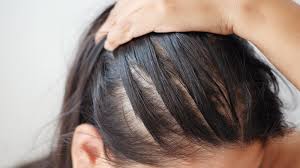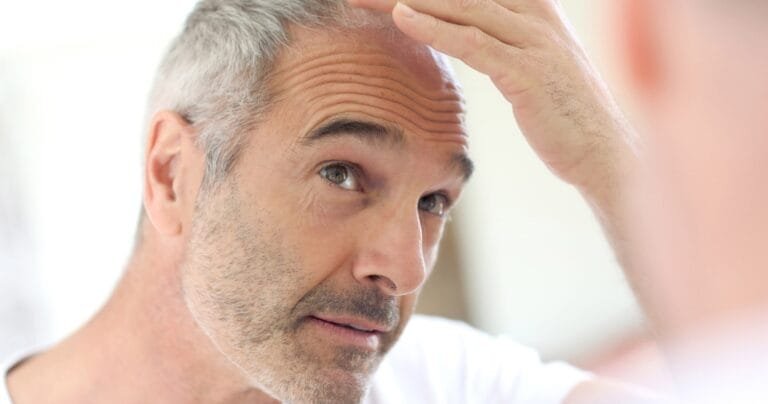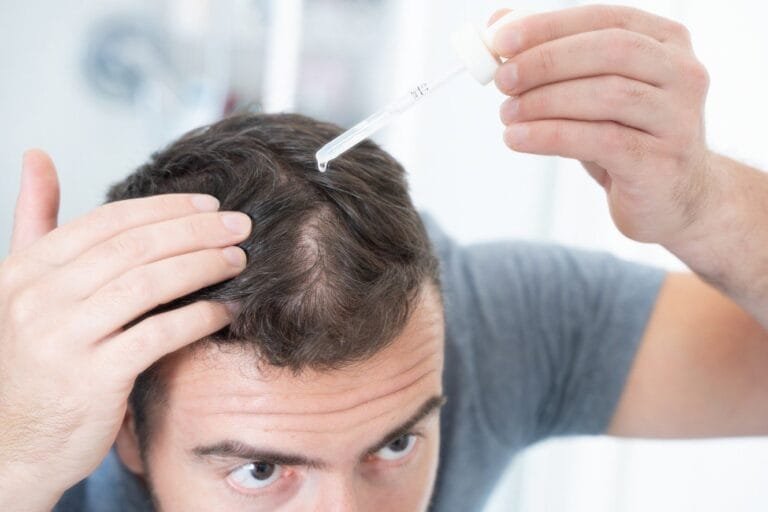The Big Question: How Much Hair Loss Is Normal?


Hair loss is a common concern that affects people of all ages, genders, and backgrounds. Whether you’re noticing more strands in your hairbrush or seeing your scalp more than you’d like, it’s natural to wonder: How much hair loss is normal? Understanding what constitutes typical hair shedding versus something more serious is crucial in determining when to seek professional advice.
Understanding the Hair Growth Cycle
Before diving into what constitutes normal hair loss, it’s essential to understand the hair growth cycle. Hair grows in three distinct phases:
- Anagen Phase: This is the active growth phase, during which hair follicles produce new hair. This phase lasts between 2 and 7 years, and the length of it determines how long hair can grow.
- Catagen Phase: This transitional phase lasts about 2-3 weeks. During this phase, hair stops growing and detaches from the blood supply, transitioning into the resting phase.
- Telogen Phase: This is the resting phase, lasting about three months. At the end of this phase, the hair falls out, making way for new growth. On average, 10-15% of the hairs on your scalp are in the telogen phase at any given time.
Understanding these phases helps clarify why hair shedding is a natural part of hair growth.
What is Considered Normal Hair Loss?
On average, most people lose between 50 to 100 hairs per day. This amount can seem significant, especially when you notice it in your hairbrush or shower drain, but it’s generally within the range of average hair loss. However, several factors can influence how much hair loss is considered normal, including:
- Age: The anagen phase shortens as you age, resulting in thinner hair and potentially more noticeable hair loss.
- Gender: Men tend to experience more loss of hair than women due to factors like genetics and hormones.
- Seasonal Changes: Some people experience more hair shedding during certain seasons, particularly in the fall and spring.
- Health: Your overall health, including stress levels, diet, and medical conditions, can significantly impact how much hair you lose daily.
When is This a Cause for Concern?
While losing 50 to 100 hairs a day is generally expected, losing significantly more than this could indicate an underlying issue. Here are some scenarios where hair loss might indicate a problem:
- Sudden, Excessive Hair Loss: If you suddenly start losing much more hair than usual, it could be a sign of telogen effluvium, a condition often triggered by stress, illness, or hormonal changes.
- Thinning Hair: If your hair appears to be thinning overall rather than just shedding, this could indicate androgenetic alopecia, also known as male or female pattern baldness.
- Bald Patches: The appearance of bald patches or areas where the hair seems to fall out in clumps could indicate conditions like alopecia areata or other forms of hair loss.
- Receding Hairline: A receding hairline is often a sign of male pattern baldness, a genetic condition requiring effective professional intervention.
Contributing Factors
Several factors can contribute to hair loss beyond the usual daily shedding:
- Genetics: Hereditary hair loss, or androgenetic alopecia, is the most common cause of hair loss, affecting both men and women.
- Hormonal Changes: Conditions like pregnancy, menopause, thyroid disorders, and polycystic ovary syndrome (PCOS) can lead to hair loss.
- Stress: Physical or emotional stress can trigger hair loss through telogen effluvium.
- Nutritional Deficiencies: Lack of essential nutrients like iron, protein, and vitamins can contribute to hair loss.
- Medical Conditions: Certain conditions, including autoimmune diseases and scalp infections, can lead to hair loss.
- Medications: Some medications, such as chemotherapy drugs, blood thinners, and birth control pills, list hair loss as a potential side effect.
Preventing and Managing
If you’re concerned about hair loss, there are several steps you can take to manage and potentially reduce it:
- Maintain a Healthy Diet: Ensure you get enough vitamins and minerals, particularly iron, biotin, and zinc.
- Manage Stress: Practice stress-reduction techniques like meditation, exercise, or therapy to help reduce stress-related hair loss.
- Consult a Professional: If you notice excessive loss, consult a healthcare provider to rule out any underlying medical conditions.
- Consider Treatment Options: Depending on the cause of your hair loss, treatments like topical minoxidil, oral medications, or hair restoration procedures may be effective.
When to See a Hair Specialist
If you’re experiencing a loss beyond what’s considered normal, it’s essential to consult with a specialist. At Davis Hair Restoration, we understand how distressing hair loss can be and offer personalized treatment options to help you regain your confidence. Led by Dr. Steven Davis, our board-certified plastic surgeon, our hair transplant service in Cherry Hill, NJ, provides advanced solutions tailored to your unique needs.
Whether you’re dealing with hereditary hair loss, hormonal changes, or another underlying condition, we’re here to help. Contact us today to schedule a consultation and take the first step towards restoring your hair and confidence.
Understanding how much hair loss is average can provide peace of mind and help you determine when to seek professional advice. While losing 50 to 100 hairs a day is typically nothing to worry about, sudden or excessive hair loss may indicate an underlying issue that requires attention. If you’re concerned, don’t hesitate to contact us and we can guide you through your treatment options.






